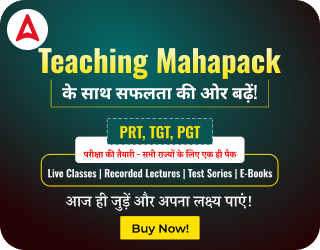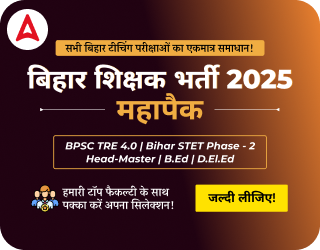Table of Contents
Teaching methods are the procedure, technique or way of teaching, especially in accordance with a defined plan. Teaching Methods can be inductive, deductive, project and many more. these methods help to teach to communicate with students. Let’s learn all methods for teaching methods so teaching can be more productive.
Teaching Methods
Inductive Method (By Francis Beckon)
Inductive Method: In an inductive method of teaching the pupils are led from particular instances to a general conclusion. Concrete examples are given and with their help, students are helped to arrive at certain conclusions and principles. In this method, the child is led to discover the truth for himself. The inductive method is a very suitable method for the teaching of Sciences, Mathematics and Grammar.
| Maxims | Steps | Merits | Demerit |
|
|
|
|
Deductive Method (By Aristotle)
Deductive Method: The deductive method is the reverse of the inductive method. In this method rules, generalizations and principles are provided to find students and then they are asked to verify them with the help of particular examples: The teacher’s work is much simplified by giving a rule and asking the pupils to verify it by application to several concrete examples.
| Maxims | Steps |
|
|
| Merits | Demerits |
|
|
Project Method (By W.H. Kilpatrick)
This Method was exponent by Kilpatrick in 1918 but based on the views of John Dewey, his professor. The Pragmatists find it very applicable. It is an experience-centred teaching method and evolves social tendencies. The main focus of Kilpatrick was to socialize a child. It is useful to achieve cognitive and affective objectives. It is linked with life situations. Kilpatrick, William, “A project is a whole-hearted purposeful activity proceeding in a social environment.”
“Project-is problematic act carried to completion in its natural setting”- Professor Stevenson.
A project has the following characteristics:
- A project is a purposeful activity.
- A project is a real-life activity.
- A project is an activity in a natural setting.
- A project is a problem-centred activity.
- A project is an activity in a social setting.
Various steps in a project
Along the most important steps involved in a project:
- Providing a situation
- Choosing the project
- Planning the project
- Executing the project
- Evaluating the project and
- Recording the project
Merits of the Project Method
- Based on the level of learning: It is in accordance with the following psychological laws of learning (given by E.L. Thorndike)
(a) The law of readiness: According to this law, we learn most when our minds are ready to receive. The project Method prepares the minds of the students by providing them with suitable situations.
(b) The law of effect: This law states that if learning is to be effective and fruitful, it must be accompanied by satisfaction and – happiness. The students derive immense pleasure when they manipulate their own activities.
(c) The law of exercise: This law states that learning is to be must be practised. The Project Method affords many opportunities for the students to learn by doing.
- Related to life.
- Correlation with Other Subjects.
- Training for a Democratic way of life.
- Training in Citizenship.
Demerits and Limitations:
- Learning is achieved by imparting notes as a whole.
- Neglect of Intellectual work.
- The upset of the Time-Table
- Neglect of Drill work.
- Lack of Competent Teachers.
Problem Solving Method (By Socratic & Saint Thomas)
Problem-solving behaviour occurs in novel or difficult situations in which a solution is not obtainable by the habitual methods of applying concepts and principles derived from past experience in very familiar situations.
Steps of Problem-Solving Method:
- Problem – awareness or selection of problem.
- Problem – understanding or Presentation of the problem
- Collection of Relevant Information
- Formation of Hypotheses or Hunch for Possible Solutions
- Collection of Data and Verification or Selection of a proper Solution
- Drawing conclusion & applying the solution
The Heuristic Method (By Ii.E. Armstrong)
Meaning and Significance: The word ‘Heuristic is derived from the Greek word ‘heuristic” which means ‘I discover’ or ‘I find’. ‘Hence the heuristic, the method is the method in which children discover. and find things for themselves and are placed in the position of discoverers or inventors. This method was first used by Professor Henry Edwards Armstrong of the Imperial College London in the teaching of science. This method involves the strategy of “Trial and Error’ and ‘Invention Technique’.
| Merits | Demerit |
|
|



 HTET Preparation Tips for Last 15 Days
HTET Preparation Tips for Last 15 Days
 HPSC Assistant Professor Result 2025 Out...
HPSC Assistant Professor Result 2025 Out...
 HPSC Assistant Professor Admit Card 2025...
HPSC Assistant Professor Admit Card 2025...




